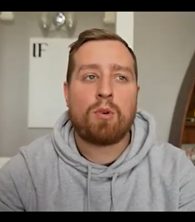Obama's Step in the Right Direction
Some positive signs from the State of the Union Address – and one big step that was missing...
IN HIS WORDS to the nation last night, President Obama's State of the Union Address spoke of a new American economy that is "built to last." Of course, in the wake of the dot com bubble, the subprime mortgage fiasco and the funny money of the last decade, that's certainly an objective all of us can heartily agree with, writes Martin Hutchinson for Money Morning.
The American Dream is in need of repair. The good news is that with one exception the president's State of the Union Address did outline some useful steps that could be taken to help boost the economic recovery.
Naturally though, I think the details could use a little tweaking!
To start off with, the president outlined his primary strategy to help bring manufacturing jobs back to the United States. That's an entirely worthy objective.
What's more, this goal actually has a decent chance of being met, at least partially.
Here's why...
Chinese manufacturing costs have been rising rapidly over last few years, since its workforce is now demanding a larger share of the profits in the country's new found prosperity.
Also the president was correct when he claimed that there are several intrinsic advantages to manufacturing here in the states. As a result, the cost equation has been swinging pretty rapidly in favor of bringing manufacturing jobs back home. His example of the Master Lock plant in Milwaukee running at full capacity for the first time in fifteen years is just part of a greater trend.
The president's proposal to lower corporate tax rates, while eliminating the loopholes that allow companies like General Electric to pay almost no US taxes, will also undoubtedly help to bring even more manufacturing jobs back home. Not only is this sensible, the president's proposal is politically clever as well.
After all, it's always pretty smart to call for something already starting to happen. That way your success is almost guaranteed!
Unfortunately, some of the president's other ideas were less satisfying...
We also learned the president wants even more government "investments" in technologies such as clean energy. However, Solyndra and other fiascos have surely shown that the government is a lousy venture capitalist – and the dangers of money being thrown away through corruption and political back-scratching are just too great.
On the tax side, the president also proposed incorporating a "Buffett Rule" whereby everybody earning more than $1 million would pay a minimum of 30% of their income in tax. That, of course, is a slap at his potential November opponent Mitt Romney, who pays about 14% of his income in taxes, thanks to the fact his income consists of dividends and capital gains.
This 30% figure is reasonable, although it should include ALL taxes, state, local, and Medicare as well as ordinary income. At present, marginal tax rates of more than 50% are common in many instances.
In this case, dividends can easily be brought into this framework by making them tax-deductible against corporate income tax – thus eliminating the incentives for corporate loopholes and excessive top management pay. With that provision, dividends could then be taxed as ordinary income, taxing folks like Romney at a much higher rate.
The one problem is capital gains, where the past 40 years' of experience has shown that capital gains tax rates above 20% reduces revenue and damages the economy. However the president's call for closing tax loopholes on the wealthy is well taken, and is a much better plan than raising the tax rate on their income, which discourages risk-taking and effort.
On the other hand, the mortgage interest tax deduction, the charitable gifts deduction and to a lesser extent the state and local tax deduction all tilt towards behavior that's not economically helpful. Capping those three deductions, at least, would raise huge revenues, thus closing the budget deficit, as well as improving the economy.
Finally, the president called for Congress to enact legislation that would make a politician's investments subject to the same insider-trading restrictions and conflict of interest rules that the rest of us have to abide by. Needless to say, this is one idea that should have been done a long time ago.
However, there is one big gap between the president's programs and his promise of an economy that is "built to last." It's monetary policy.
That's because when the Fed pushes interest rates below inflation, all kinds of leverage, speculation and dodgy deals are encouraged. At the same time, low rates discourage savings while capital investment overseas becomes cheaper than hiring workers at home. As long as these policies continue to exist, the harder it will be to change the overall equation.
So if the president is serious about creating an economy "built to last" he can start by firing Fed chairman Ben Bernanke and reversing his ultra-low-rate policies.
Even still, the president's State of the Union Address is a step in the right direction.
After all, you have to start somewhere...
Looking to Buy Gold?...












 Email us
Email us